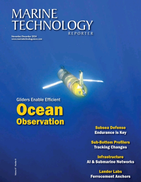TenneT concludes contracts with Prysmian and Siemens for construction of ‘green’ subsea cable between Netherlands and Denmark
Dutch Transmission System Operator (TSO) TenneT and its Danish counterpart Energinet.dk have signed contracts with Siemens and Prysmian for the construction of the COBRAcable between the Netherlands and Denmark. Siemens will supply two converter stations for the direct-current (DC) connection: one in Eemshaven (Netherlands) and one in Endrup (Denmark). Prysmian will supply the DC cables and offshore installation works.
Scheduled for completion in 2019, the COBRA cable is a new, over 350 kilometers long subsea DC connection (interconnector) that will create a direct link between the Dutch and Danish power grids. The cable will have a total capacity of 700 MW, which equivalents to the annual electricity consumption of 700,000 households.
TenneT CEO Mel Kroon commented, “Siemens and Prysmian are excellent partners to undertake the realization of this important project. One main purpose of the COBRA cable is to transport electricity between the Netherlands and Denmark. This will promote further competition in the Northwest European energy market, which will ultimately benefit consumers. Because we are directly linking the Dutch and Danish power grids, the security of supply for businesses and consumers in both countries will increase. Plus the Netherlands and Denmark will be able to exchange more wind energy since the wind in both countries is not blowing with the same force on every moment."
The new interconnector will have VSC-technology (Voltage Source Converters) with transmission capacity of 700 megawatts (MW), and will run between Eemshaven (Netherlands) and Endrup (Denmark). The connection will be constructed as a High-Voltage Direct Current (HVDC) cable, since the use of DC technology minimizes transmission losses over long distances and therefore virtually eliminates any loss of renewable electricity.
Two so-called ‘converter stations’ will be built onshore in the Netherlands (at Eemshaven) and in Denmark (at Endrup) to ensure that electricity supplied by the alternating-current (AC) grids of TenneT and Energinet.dk can be imported and exported across the DC cable link. These stations convert outgoing alternating current into direct current, and incoming direct current into alternating current. All onshore power grids are based on AC technology.
The COBRA cable will have positive socioeconomic effects in the Netherlands as well as Denmark. TenneT and Energinet.dk expect to invest more than EUR 600 million in the project, which will benefit consumers and businesses in both countries. Each TSO has a 50 percent stake in the COBRA project.
COBRA is an abbreviation of ‘COpenhagen BRussels Amsterdam’. The European Commission is supporting the COBRA project with a EUR 86.5 million subsidy under the European Energy Program for Recovery (EEPR) 1. The subsidy was granted to the COBRA cable because this project can be integrated into a future offshore electricity grid in the North Sea, will promote competition in the electricity market, and will contribute to the integration of large volumes of wind energy in the grid.
The COBRA cable is not the first subsea electricity connection constructed by TenneT. In 2008 the TSO completed the NorNed cable between the Netherlands and Norway, the world’s longest DC cable link (capacity: 700 MW, length: 580 km). This was followed in 2011 by the BritNed cable between the Netherlands and the UK (capacity: 1,000 MW, length: 260 km).
In addition to the new COBRA cable, TenneT is currently also working on the NordLink project: a 1,400 MW subsea cable link between Germany and Norway. All subsea cables use HVDC technology. Click here for more information about TenneT’s cross-border electricity connections.
•  December 2024
December 2024


